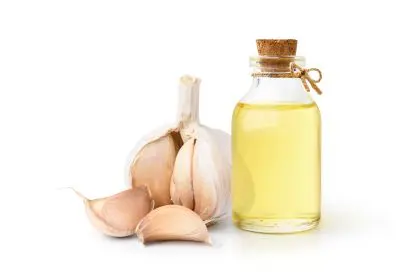Changing what you eat does more than just help you lose a few pounds or reduce your cholesterol. It has the power to reshape the very roads that transport life throughout your body. Your arteries, which silently perform their job every second, are often overlooked until something goes wrong. But what if your next meal had the power to change how they work—for better or worse?
In a time where high blood pressure, heart disease and stroke affect millions of Americans, knowing how your diet influences your arteries is more than smart. It’s necessary. The good news? A new diet can bring healing, flexibility and vitality back to your arteries.
How arteries respond to your food choices
Every bite you take sends signals to your cardiovascular system. That means the nutrients—or the lack of them—in your food can either protect or harm the arteries.
Unhealthy diets high in saturated fats, added sugars and excess sodium contribute to inflammation and stiffening of the arterial walls. Over time, this can lead to plaque buildup and narrowed arteries, a condition known as atherosclerosis. Left unchecked, it raises the risk of heart attack, stroke and even limb amputation.
However, research has shown that shifting to a healthier diet can begin reversing some of this damage. The inner lining of your arteries, called the endothelium, plays a vital role in controlling blood flow and pressure. A new diet rich in whole foods supports this lining and helps regulate nitric oxide production, which allows your vessels to relax and stay elastic.
What science says about diet and arterial health
Medical studies have confirmed that lifestyle interventions, especially dietary changes, can significantly impact arterial function. Diets like the DASH (Dietary Approaches to Stop Hypertension) and Mediterranean-style eating plans have been associated with improved arterial flexibility, reduced inflammation and slower plaque buildup.
One study from the Journal of the American College of Cardiology revealed that even short-term changes—within six weeks—of eating more vegetables, fruits and healthy fats could improve arterial function by nearly 15%. That’s measurable progress with just one grocery trip and a commitment to change.
What makes these diets effective is not simply what they remove but what they add: fiber, antioxidants and omega-3 fatty acids. These nutrients fight oxidative stress, reduce blood pressure and keep the arteries supple.
Reversing arterial damage
The power of food extends far beyond taste and energy. It offers a path to recovery for people whose arteries have already suffered damage from years of poor habits. Adopting a new, heart-focused diet has the potential to not only stop further deterioration but in some cases, even promote repair.
Dr. Dean Ornish, a pioneer in lifestyle medicine, demonstrated that a plant-based, low-fat diet combined with stress management and moderate exercise could shrink arterial plaque and improve blood flow. His clinical trials challenged decades of thinking and proved that reversal—not just prevention—was possible.
The silent transformation inside your body
Most people expect to feel different when they change their eating habits. What they often don’t realize is that long before they notice weight loss or higher energy levels, internal shifts are already taking place.
Within days of cutting back on sodium, blood pressure can start to fall. Removing trans fats and replacing them with healthy oils like olive or avocado helps lower bad cholesterol levels. As your blood becomes less sticky and more efficient at flowing through your arteries, your risk of clot formation drops.
Arteries that once struggled to expand can begin regaining flexibility. Blood flows more easily, oxygen reaches tissues more effectively, and organs—especially the heart and brain—function with renewed vitality.
Foods that heal your arteries
When you choose the right foods, you’re giving your arteries tools to recover, clean themselves and stay strong. Here are some standout choices:
- Leafy greens (spinach, kale, arugula): High in nitrates, which improve blood vessel flexibility
- Berries (blueberries, raspberries): Rich in antioxidants that reduce inflammation and oxidative damage
- Fatty fish (salmon, mackerel): Loaded with omega-3s, which lower triglycerides and reduce arterial stiffness
- Whole grains (oats, quinoa): Provide fiber that lowers cholesterol and improves blood pressure
- Nuts and seeds (almonds, chia seeds): Healthy fats and magnesium support artery function
- Legumes (lentils, beans): High in plant-based protein and fiber, they help control blood sugar and reduce bad cholesterol
What to avoid to protect your arteries
Some foods not only fail to nourish your body but actively sabotage your arteries. These are the top offenders:
- Processed meats (bacon, sausage): High in saturated fat and sodium, these increase arterial plaque
- Sugary beverages (soda, sweet tea): Cause insulin spikes that lead to inflammation and damage
- Fried foods (french fries, fried chicken): Trans fats and refined oils harden arteries
- Refined carbs (white bread, pastries): Spike blood sugar and worsen metabolic conditions tied to arterial damage
- Excess alcohol: Raises blood pressure and can inflame the arterial lining
Why timing and consistency matter
Changing your diet isn’t about a 30-day cleanse. It’s about sustained, thoughtful choices made over time. The arteries respond not just to what you eat but how often you eat, and whether you stick with the change.
Intermittent fasting, for example, has been associated with improved insulin sensitivity and decreased blood pressure. Giving your arteries time to rest between meals can be just as beneficial as what’s on your plate.
But more than any strategy, consistency is key. You don’t need perfection—you need progress. A burger once a month won’t undo a lifetime of healthy meals, but the opposite is also true: a smoothie won’t undo years of dietary damage.
Changing how you eat doesn’t just add years to your life—it adds life to your years. Your arteries are listening, adapting and transforming with every choice. They don’t demand perfection. They ask for nourishment.

















